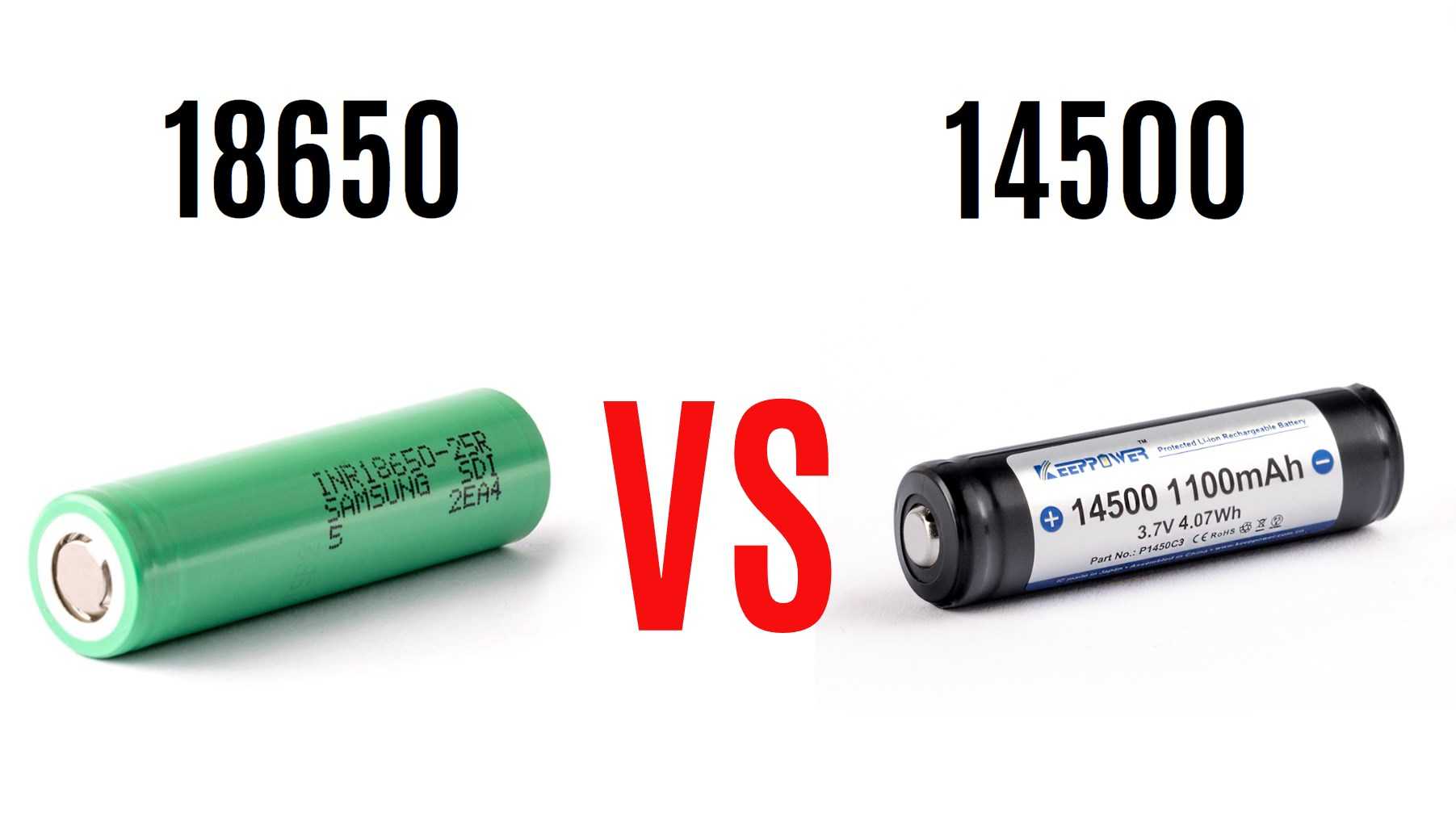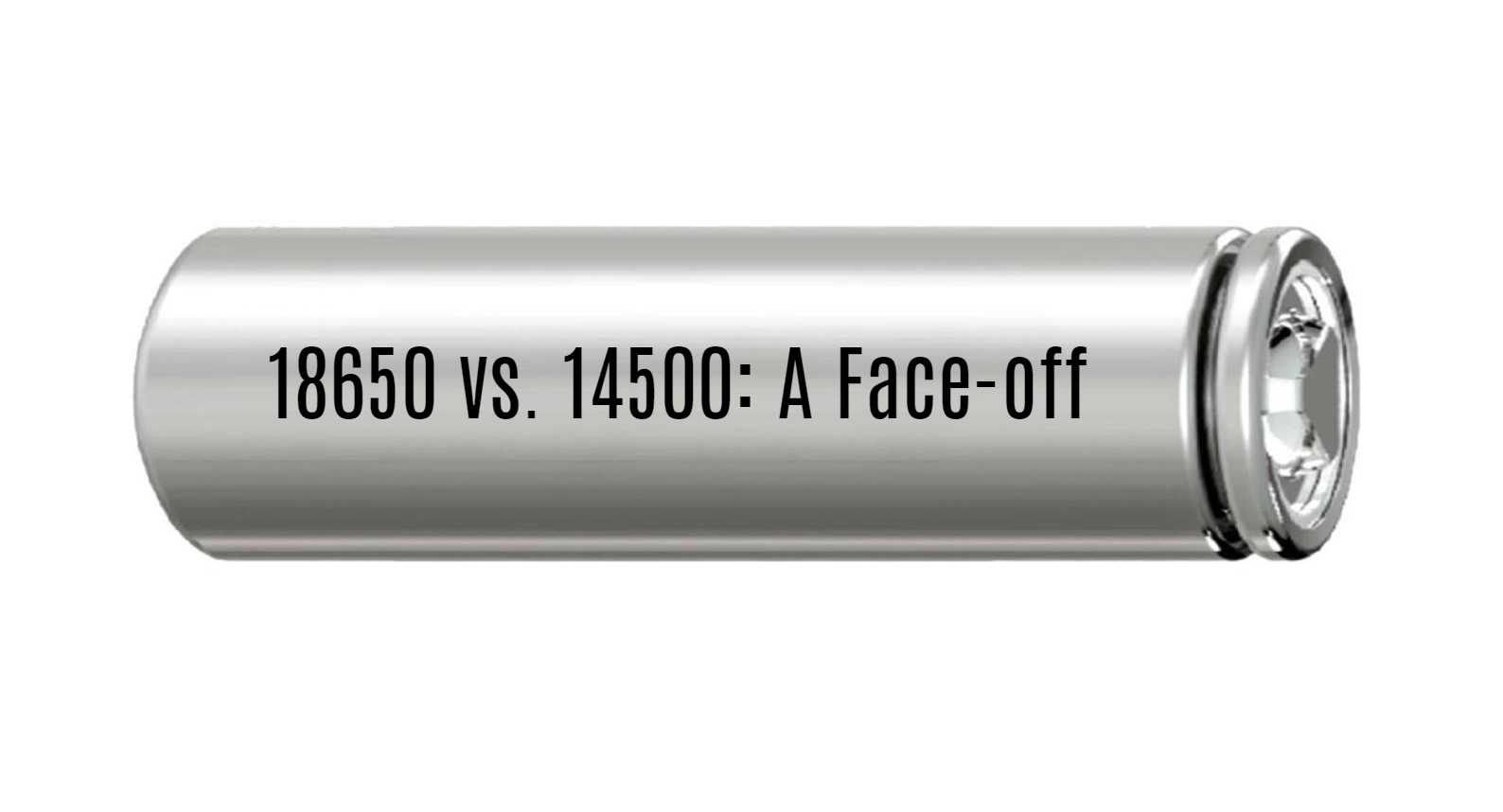The main differences between 14500 and 18650 batteries include size, capacity, and applications. The 14500 battery measures 14mm x 50mm with a capacity of 600mAh to 1200mAh, while the 18650 battery is 18mm x 65mm, offering 1800mAh to 3500mAh, making the latter suitable for high-drain devices.
Dive into the 18650 Battery
The 18650 battery is a renowned rechargeable lithium-ion powerhouse, named after its dimensions: 18mm by 65mm. Commonly found in laptops, electric vehicles, flashlights, and other power-hungry devices, this battery is celebrated for its impressive energy density. This means more power packed in a smaller space. Their robust lifespan and durability are cherries on top. What’s more? Most of them are rechargeable, a nod towards sustainability and cost-efficiency.
Introducing the 14500 Battery
The 14500 battery is another rechargeable lithium-ion variant, closely resembling the size of our regular AA battery. Its moniker “14500” indicates its dimensions: 14mm by 50mm. These batteries cater to smaller gadgets, including flashlights and digital cameras. While they share the high energy density trait with other lithium-ion types, their petite size means a comparatively lower capacity and discharge rate than their 18650 counterparts.
Wholesale lithium golf cart batteries with 10-year life? Check here.
18650 vs. 14500: A Face-off
- Size Matters: The 18650 boasts a more considerable stature, 18mm by 65mm, dwarfing the 14500, which is 14mm by 50mm.
- Power Punch: The 18650’s larger frame lets it house more energy, often around 2500mAh, overshadowing the typical 800mAh of a 14500.
- Voltage Equality: Both batteries have a similar starting ground with a nominal voltage of 3.7 volts. However, the 18650 surges ahead in current delivery due to its size.
- Applications: 18650s are the go-to for devices demanding longer battery life and higher capacity, such as laptops. Meanwhile, 14500s cater to gadgets with modest power needs, like cameras.
Before You Buy: Things to Consider
- Compatibility: Ascertain your device’s battery requirements.
- Capacity & Voltage: Determine your power needs. For hefty requirements, 18650 might be your best bet.
- Discharge Rate: Need rapid power delivery? 18650 takes the lead.
- Brand & Quality: Choose renowned brands for reliability and safety.
- Pricing: Invest wisely. Pricier batteries often offer longevity and reliability.
How do These Batteries Function?
Both 18650 and 14500 batteries share the fundamental lithium-ion mechanism. They consist of cathodes, anodes, and electrolytes. During charging, ions travel from cathode to anode, storing energy. This process reverses during discharge, powering devices. To bolster safety, they’re equipped with protection circuits, preventing overcharging and short circuits. The unique cell chemistry dictates each battery’s capacity, voltage, and discharge rate.
The Big Question: 18650 or 14500?
The verdict lies in your needs. If you’re seeking longevity and potent power, 18650 stands out. But, for compactness and light-weight demands, 14500 is your ally.
Want OEM lithium forklift batteries at wholesale prices? Check here.
Can You Charge a 14500 with an AA Charger?
A recurring query, but the answer is no. The two batteries might look similar, but their operational voltages differ vastly. Charging a 14500 using an AA charger might lead to overcharging, jeopardizing the battery and safety.
Need Wholesale Batteries?
Redway’s engineering team has successfully pioneered 18650 and 14500 lithium batteries. If customization is on your mind, get in touch with us for plans and quotes.
Wrapping Up
When choosing between the 18650 and 14500, consider your device’s demands. The 18650 promises longevity and robust power, while the 14500 is all about portability and swift charging. Your device’s power requirements will dictate the ideal choice.
FAQs
Why is 14500 Battery Broadly Compatible?
The 14500 battery is broadly compatible due to its physical size and voltage output. With dimensions similar to a standard AA battery, the 14500 battery can fit into devices designed for AA batteries, offering versatility and convenience. Its higher voltage output of around 3.7 volts provides more power for compatible devices. However, it’s crucial to check device specifications before using a 14500 battery to ensure compatibility and optimal performance.
What are Key Takeaways for 18650 vs 14500 Battery Choice?
- 18650 Battery:
- High capacity and performance for high-drain devices.
- Ideal for laptops, power tools, and other devices requiring sustained power.
- Longer runtime and versatility.
- 14500 Battery:
- Compact size and portability.
- Compatible with devices designed for AA batteries.
- Suitable for compact gadgets and devices with limited space.
What is Typical Capacity Range of 14500 Battery?
The typical capacity range of a 14500 battery is around 600mAh to 1600mAh. This capacity refers to the amount of energy that the battery can store and deliver. Despite its lower capacity compared to larger batteries like the 18650, the compact size of the 14500 battery makes it ideal for applications where space is limited. Whether it’s for portable electronics, flashlights, or other low-power devices, the 14500 battery provides reliable power in a compact form.
What are Unique Specs and Apps of 18650 and 14500 Batteries?
- 18650 Battery:
- High capacity, durability, and versatility.
- Typical capacity ranging from 1800mAh to 3500mAh.
- Powers high-performance devices like laptops, flashlights, and electric vehicles.
- Exceptional energy density and long-lasting power.
- 14500 Battery:
- Compact size and compatibility with devices designed for AA batteries.
- Typical capacity ranging from 600mAh to 900mAh.
- Ideal for portable electronics, flashlights, and small gadgets.
- Versatile power solution with broad compatibility.
What is the difference between a 14500 and 18650 battery?
- Size and Dimensions:
- 14500 Battery: Diameter of 14 mm, Length of 50 mm (Similar to an AA battery)
- 18650 Battery: Diameter of 18 mm, Length of 65 mm
- Capacity:
- 14500 Battery: Typically ranges from 500 to 800 mAh
- 18650 Battery: Higher capacity, ranging from 1200 to 3500 mAh
- Voltage:
- Both batteries operate at a voltage of 3.7 volts, providing consistent power output for devices.
What does 14500 mean on a battery?
- Size and Dimensions:
- A 14500 battery has a diameter of 14 mm and a length of 50 mm, similar to a standard AA battery.
- Voltage and Capacity:
- The voltage of a 14500 battery is 3.7 volts, providing consistent power output.
- The capacity of a 14500 battery typically ranges from 500 to 1200 mAh, determining its energy storage capability.
- Rechargeable Lithium-ion Battery:
- The 14500 battery is a rechargeable lithium-ion battery, allowing for multiple uses and reducing waste from disposable batteries.
What do the numbers on a 18650 battery mean?
- Diameter and Height:
- The first two numbers indicate the battery’s diameter, typically 18 or 22 mm.
- The next two numbers represent the battery’s height, such as 35, 44, 50, or 65 mm.
- Shape:
- The last number signifies the battery’s shape, either a cylinder or a non-cylinder.
- An 18650 battery, for instance, has a cylindrical shape.
14500 VS 18650
What is the maximum mah for a 14500 battery?
- Maximum mAh Capacity Range:
- The maximum mAh capacity of a 14500 battery typically falls between 500 and 1200 mAh.
- The mAh rating reflects the battery’s energy storage capability, influencing its runtime before requiring a recharge.
- Runtime and Performance:
- Higher mAh ratings generally result in longer-lasting batteries, providing extended usage time for devices.
- It’s important to note that the specific maximum mAh capacity may vary depending on the brand and manufacturer of the 14500 battery.








